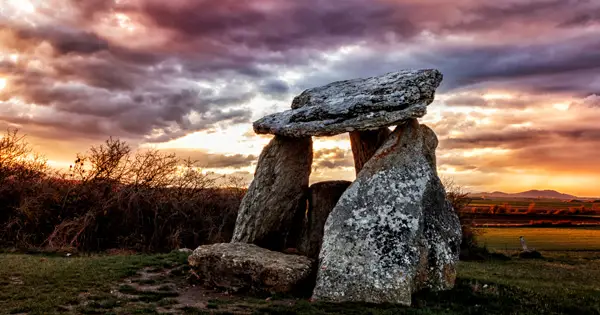Although Ireland is, of course, a Celtic country it hasn’t always been the case. In terms of how long it has been populated, the Celts are relative newcomers.
Who lived in Ireland before the Celts?
For more than 7,000 years the island was inhabited by people of the Stone Age. Very little is known about them although they did leave behind a few clues which has enabled historians and archaeologists to offer us a glimpse of who they were and how they lived.
The first people in Ireland were hunter gatherers who arrived about 7,000 to 8,000 BC. This was quite late compared with most of southern Europe. The reason was the climate.
The Ice Age began to retreat about 10,000 years ago. Naturally, the ice melted quicker in the warmer southern European countries so they were the first to be inhabited. Ireland, like its neighbour Great Britain, lay further north and so remained colder and uninviting for longer.
Nevertheless, the ice had retreated sufficiently by about 8,000BC to make Ireland attractive to migrating populations spreading out in search of food and new hunting grounds.
Ireland and Britain cut off from mainland Europe
As the ice melted, rising sea levels meant Ireland and Britain were cut off both from each other and from mainland Europe. It’s not known whether the first Irish settlers were able to walk across before the seas rose or whether they arrived later by boat.
What is almost certain is that they arrived first in the north. The north east coast of Ireland is only about 12 miles from the southern tip of the Mull of Kintyre in the south west of Scotland.
Most archaeological evidence of these early settlers is found in the north of Ireland – most notably at a place called Mound Sandel, near to what is now the town of Coleraine.

These earliest settlers were from the Mesolithic period, which simply means Middle Stone Age.
The people of this period are characterised by their use of stone tools. Their preferred stone was flint because of its hardness and because it could be fashioned to provide a sharp cutting edge. The early settlers would have been delighted to find that Co Antrim in the north of Ireland has a plentiful supply of flint. To the early settlers, the discovery of this flint would have been like discovering oil today.
Lifestyle of early hunter-gatherer settlers
The lifestyle of the hunter gatherers was to move from location to location in search of food growing wild such as fruits, nuts and berries. Their diet would have been supplemented by hunting for whatever animals and birds they could catch.
These early settlers never stayed in one place and would have spread out across Ireland. Their nomadic lifestyle meant they left little trace of how they lived, what they thought about life, how they structured their society or whether they had any form of religion or belief system.
They lived undisturbed like this for more than 3,000 years. Eventually, however, their lives were transformed by revolutionary new ideas introduced by the people of the New Stone Age.
